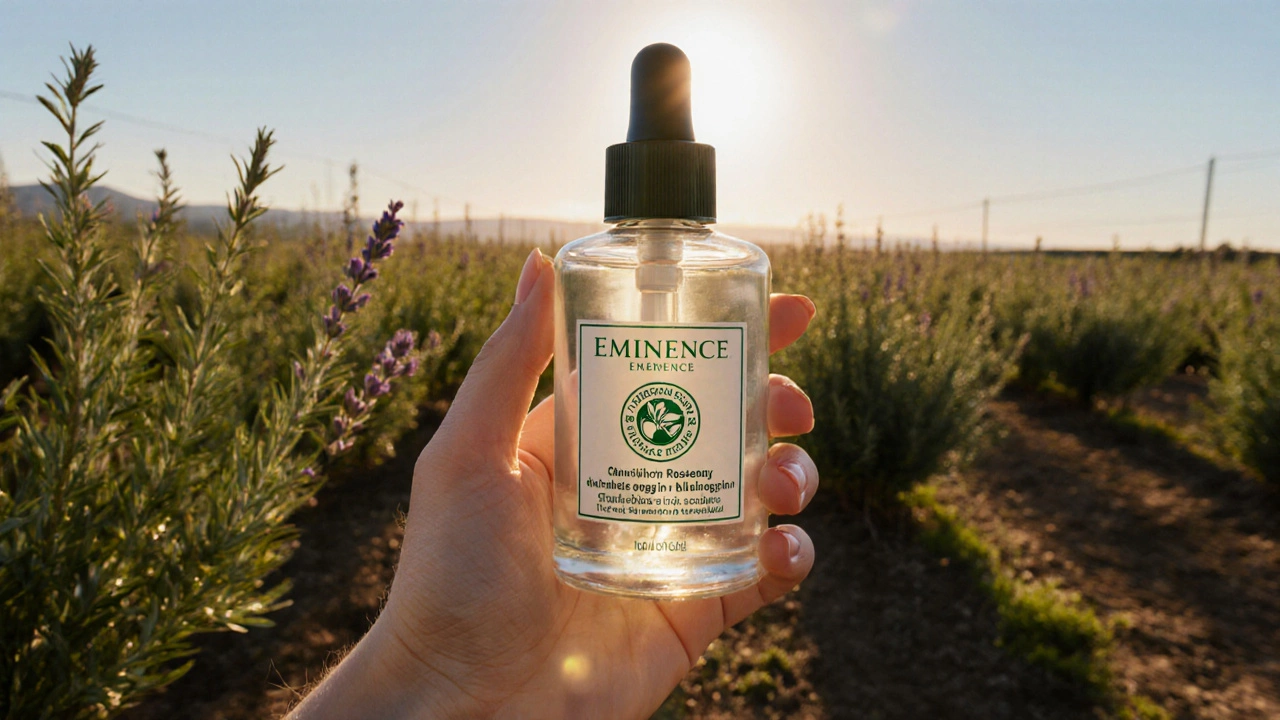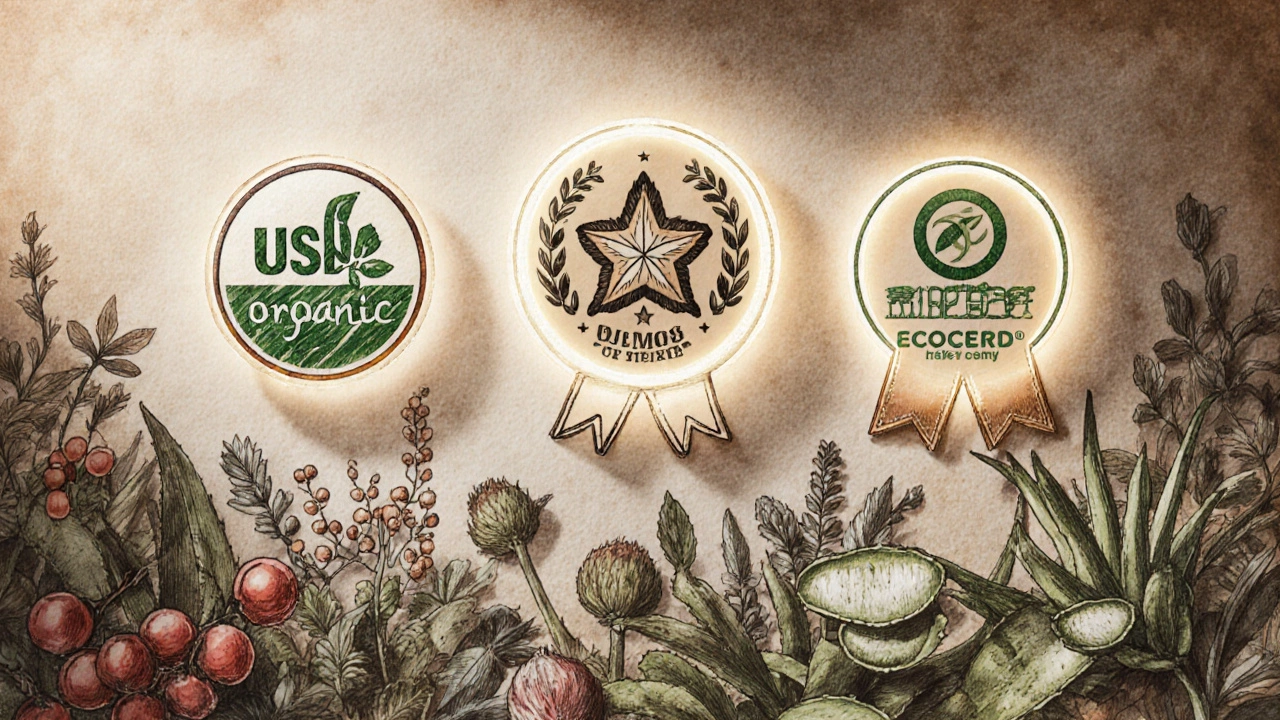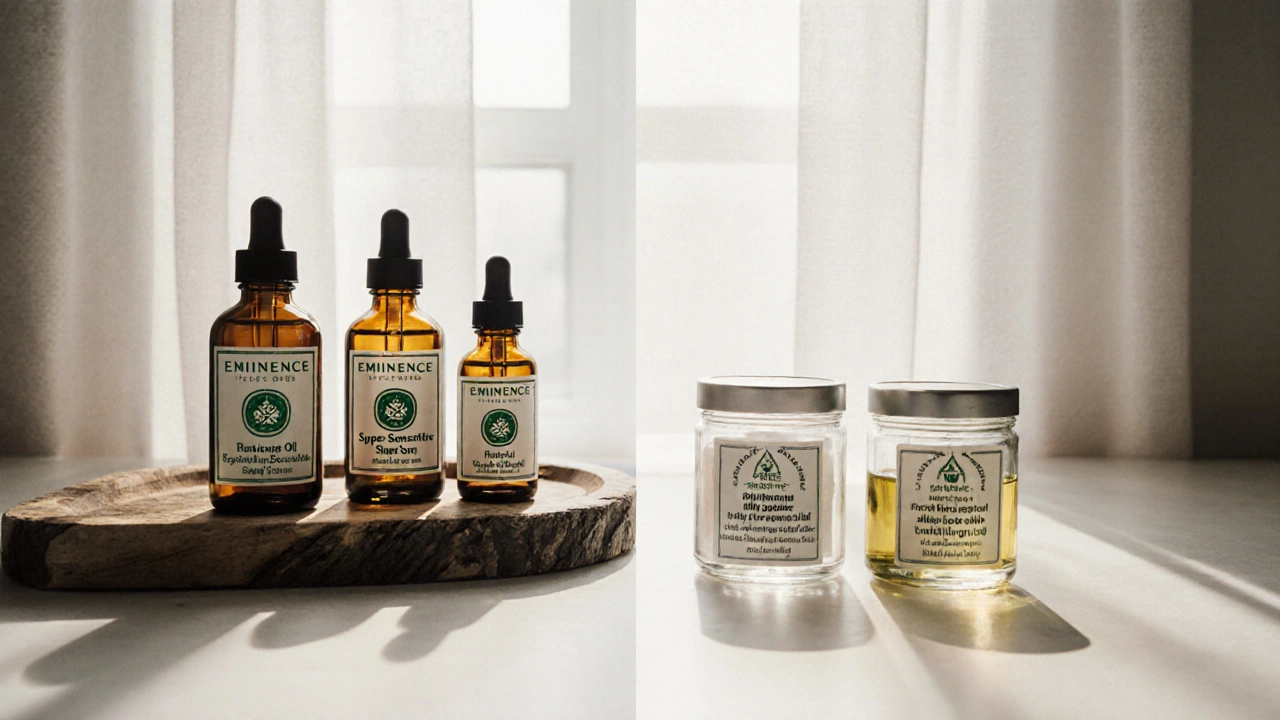
USDA Organic vs. COSMOS Certification Comparison
Compare the key differences between USDA Organic and COSMOS certification standards for skincare products. Understanding these differences helps you identify which products meet your organic standards.
This tool is based on the article's analysis of Eminence skincare products and their organic claims.
USDA Organic
The U.S. standard for organic products.
- 100% Organic All ingredients must be certified organic
- Organic Contains at least 95% organic ingredients
- Made with Organic Ingredients Contains at least 70% organic ingredients
- Not Allowed Synthetic preservatives, mineral oils, or non-organic fillers
COSMOS Standard
The European standard for natural and organic cosmetics.
- Organic At least 95% organic ingredients
- Natural At least 95% natural ingredients
- Permitted Up to 5% non-organic, natural-origin ingredients allowed
- Common in Eminence Includes carrier oils and preservatives like phenoxyethanol
What This Means for Eminence Products
Eminence products that carry the USDA Organic seal meet the strict 100% organic standard.
Most Eminence products carry the COSMOS certification, meaning they contain at least 95% organic ingredients with a small percentage of non-organic components for functionality.
Key Takeaway: "Organic" on Eminence products typically means COSMOS-certified, not USDA 100% organic.
Check Your Eminence Product
Enter your product name to see if it meets USDA Organic or COSMOS standards:
When you see a product labeled "organic" you automatically assume it’s completely free of synthetics, right? That gut feeling drives the question many of us are asking today: Eminence organic - is it really 100% organic?
Key Takeaways
- Eminence uses a mix of certified organic botanicals and a few non‑organic carriers or preservatives.
- Only a handful of their products carry USDA‑Organic or COSMOS‑certified seals.
- The brand’s "organic" marketing aligns with EU‑style “natural‑origin” standards, not the strict U.S. "100% organic" rule.
- Reading labels and checking certification logos can tell you exactly which items meet full‑organic criteria.
- If you need a fully organic routine, pair Eminence’s certified lines with truly organic alternatives for the non‑certified steps.
What "100% Organic" Actually Means
In the United States, the USDA National Organic Program (NOP) defines "100% organic" as a product containing only ingredients that are on the National List of Allowed and Exempt Substances. Any synthetic pesticide, mineral oil, or non‑organic filler disqualifies a product from the label.
Across the Atlantic, the European Union follows the COSMOS‑standard (formerly NATRUE). COSMAS permits a small percentage of non‑organic but naturally‑derived ingredients, such as certain carrier oils, if the overall formulation is primarily botanical.
Understanding these two regimes helps you spot the difference between a product that is truly 100% organic (USDA‑Organic) and one that is largely organic but still includes a few non‑organic companions (COSMOS‑standard).
Meet the Brand: Eminence Organic Skincare
Eminence Organic Skincare is a boutique brand founded in 2002 in North Carolina. The company positions itself as a "farm‑to‑face" line, sourcing ingredients from small‑scale farms and emphasizing botanical extracts. Their tagline, "Organic Beauty, Naturally," is a big part of their marketing.
Eminence’s own website states that "all of our products contain organic ingredients," but they stop short of saying every ingredient is certified organic. That nuance fuels the debate we’re unpacking.
Ingredient Audit: How Much Is Really Organic?
To answer the core question, we examined three of Eminence’s best‑selling items: the Radiant Facial Oil, the Super Sensitive Serum, and the Stone Crop Oil. Below is a quick breakdown of each product’s ingredient list, highlighting which components are certified organic.
| Product | Certified Organic Ingredients | Non‑Organic / Non‑Certified Ingredients |
|---|---|---|
| Radiant Facial Oil | Organic Rosehip Oil, Organic Sea Buckthorn Oil, Organic Pomegranate Seed Oil | Jojoba Oil (non‑certified), Vitamin E (synthetic) |
| Super Sensitive Serum | Organic Chamomile Extract, Organic Calendula Extract | Glycerin (plant‑derived, non‑certified), Phenoxyethanol (preservative) |
| Stone Crop Oil | Organic Stonecrop Extract, Organic Aloe Vera Juice | Caprylic/Capric Triglyceride (derived from coconut, non‑certified) |
Notice the pattern: the core botanical actives are often organic, while carrier oils, solvents, or preservatives may not carry a certification. This design keeps the formulas stable and affordable but stops short of a pure‑organic label.

Certifications Eminence Holds
Not all Eminence products are created equal when it comes to official seals. Here’s what you’ll actually see on the packaging:
- USDA Organic - Only a few limited‑edition masks and balms carry this seal. The USDA requires at least 95% organic content for the "organic" label, and 100% for the "100% organic" label.
- COSMOS‑standard - Most of the line is COSMOS‑certified, meaning the formulation contains a minimum of 95% natural‑origin ingredients, with at most 5% non‑organic for functional purposes.
- Ecocert - Ecocert collaborates on the COSMOS audits and appears on some skincare kits, confirming adherence to European natural standards.
These certifications are legitimate, but they do not equal a blanket "100% organic" claim across the whole brand.
How to Verify a Product’s Organic Status
When you’re standing in the aisle or scrolling online, use this quick checklist:
- Look for the USDA‑Organic seal (green leaf). If it’s present, the product is at least 95% organic, and the label will state "100% organic" if every ingredient meets the list.
- Check for the COSMOS or Ecocert logo. This tells you the product follows European natural‑origin standards, which allow a small non‑organic fraction.
- Read the ingredient list. Certified organic ingredients often have "organic" in front (e.g., "Organic Rosehip Oil"). Anything without that label is likely non‑certified.
- Visit the brand’s official site and look for a "certification page" that links to the certifying body’s database. You can search the batch number to confirm the claim.
- Beware of buzzwords like "nature‑derived" or "plant‑based" - they sound organic but lack third‑party verification.
Pros and Cons of a Mostly‑Organic Brand
Choosing Eminence comes with trade‑offs. Below are the main points to consider.
| Benefit | Limitation |
|---|---|
| High concentration of certified organic botanicals delivers potent antioxidant activity. | Non‑organic carriers can introduce trace residues of synthetic processing. |
| Transparent sourcing stories build consumer trust. | Price points are higher than conventional drugstore brands. |
| COSMOS certification ensures low‑impact manufacturing and biodegradable packaging. | Formulations may contain phenoxyethanol or other mild synthetics for preservation. |
If your skin tolerates those few non‑organic components, Eminence offers a solid blend of efficacy and environmental care. If you have a strict “no‑synthetic any‑where” policy, you’ll need to supplement with fully certified organic baselines.

Common Misconceptions
Misconception 1: "Organic" on a label means every single ingredient is certified.
Reality: In many regions, "organic" can be a marketing term signifying that at least 70‑95% of the ingredients are naturally derived. Only the USDA “100% organic” badge guarantees full certification.
Misconception 2: If a brand calls itself "organic," its packaging must be 100% recyclable.
Reality: Packaging standards are separate from ingredient certifications. Eminence uses recyclable glass and paper, but you’ll still find plastic caps on some lines.
Misconception 3: All Eminence products share the same level of organic integrity.
Reality: The brand has tiered lines - some fully USDA‑Organic, many COSMOS‑certified, and a few “organic‑in‑spirit” items that rely on responsibly‑sourced ingredients without third‑party seals.
Practical Advice: Building an Authentic Organic Routine
Here’s a step‑by‑step guide to decide how Eminence fits into a truly organic regimen.
- Identify the skin‑care steps you need (cleanser, serum, moisturizer, sunscreen).
- Mark each step with the level of certification you demand. For example, you might require a USDA‑Organic cleanser but allow a COSMOS serum.
- Cross‑reference Eminence’s product list. Choose the items that meet your chosen certification level.
- Fill any gaps with alternative brands that have full USDA‑Organic certification (e.g., True Botanicals, Juice Beauty).
- Track ingredient changes over time. Brands sometimes reformulate, so re‑check the label every few months.
By treating the routine as a puzzle rather than a single piece, you can keep the overall organic percentage high while still enjoying Eminence’s beloved textures and scents.
Bottom Line
Eminence is undeniably a leader in the natural‑beauty space, but the short answer to "Is Eminence 100% organic?" is: not across the entire line. Some products carry USDA‑Organic or COSMOS seals, meaning they are fully or nearly fully organic. The majority of the range contains a blend of certified botanicals and a few non‑organic carriers or preservatives, which keeps the formulas stable and cost‑effective.
If you’re okay with a mostly‑organic approach, Eminence offers excellent quality and transparent sourcing. If your skin or conscience requires every component to be certified organic, you’ll need to cherry‑pick the USDA‑Organic items or supplement with other fully‑certified brands.
Frequently Asked Questions
Does Eminence have any USDA‑Organic certified products?
Yes. A limited selection of masks, balms, and a few seasonal oils carry the USDA‑Organic seal, indicating they meet the strict 100% organic standard.
What is the difference between COSMOS‑standard and USDA‑Organic?
COSMOS‑standard is a European certification that allows up to 5% non‑organic, natural‑origin ingredients for functional purposes. USDA‑Organic requires every ingredient to be on the National List of Allowed Substances, with no synthetic additives for a "100% organic" label.
Can I trust Eminence’s “organic” marketing?
The brand is transparent about its sourcing and does obtain legitimate COSMOS and occasional USDA certifications. However, "organic" on its own does not guarantee 100% certification, so always check the label for the specific seal you need.
Are the non‑organic ingredients in Eminence harmful?
Most non‑organic components are benign carrier oils or mild preservatives like phenoxyethanol, which are widely regarded as safe at the concentrations used. They’re included mainly for stability, not for therapeutic benefit.
How can I verify a specific Eminence batch’s certification?
Visit the certification body’s website (USDA Organic, COSMOS‑standard, Ecocert) and enter the batch or lot number printed on the packaging. The database will confirm whether the product meets the claimed standard.
 Hair Care
Hair Care